Sending out a cold email is just the beginning of the customer conversion process. If you were under the impression that it was a job done after the initial cold email, we have news for you!
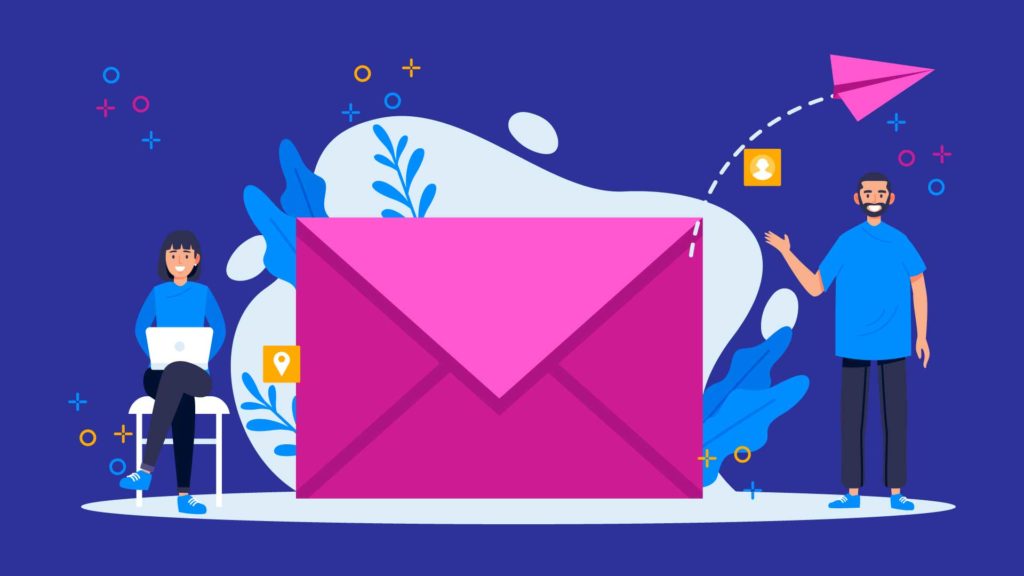
According to a cold email statistic, the average response rate for an initial email is 16%. Sending at least one follow-up will get a response rate of 27% on average. That’s a big jump!
To get your prospects’ attention you need a proper follow-up email strategy. We cannot emphasize enough the importance of follow-up. But that’s our job so let’s get to it!
Importance of Follow-Up Emails For Sales People
What is the definition of “campaign?”
“An organized course of action to achieve a goal.”
Or:
“A series of military operations intended to achieve a particular objective.”
Notice the bolding. It’s called an “email campaign” for a reason! It’s a course of action, a series of operations. Sending potential customers that initial email is only the first step in your course of action, your series of operations. The follow-up is also known as the circle back email; capable of so much more than just popping up on your prospects’ inbox.
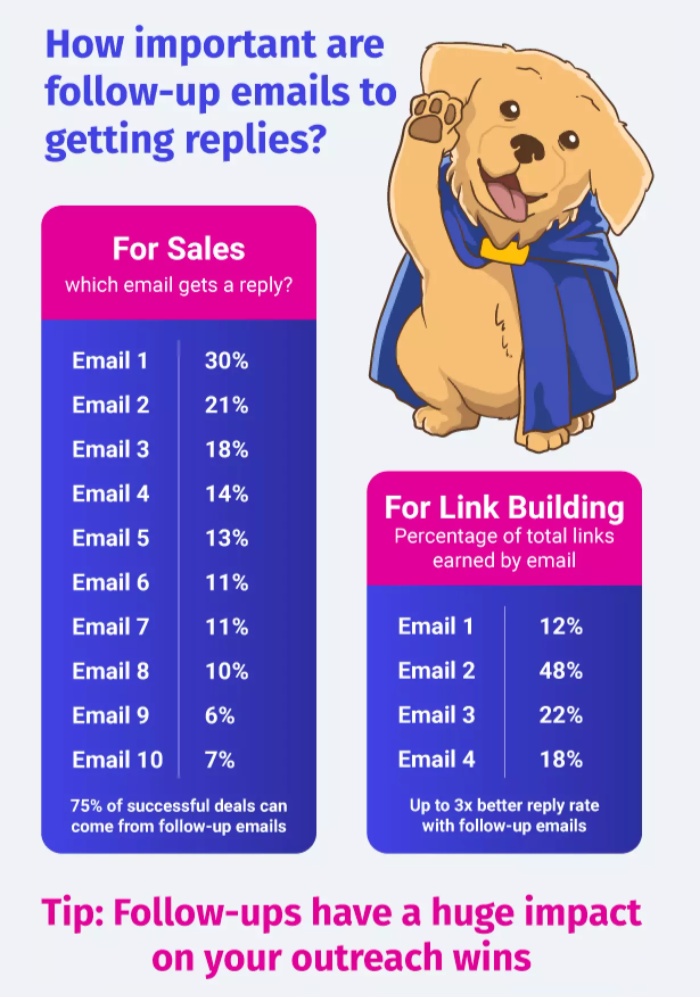
Follow-up emails:
- Onboard potential customers
- Are a courtesy
- Show interest
- Provide additional information
- Revive old relationships
As an SDR, a follow-up email after an interview can increase your chances to get that dream job of yours.
What Follow Up Emails Do Better Than Initial Emails
Your initial email has a very specific purpose. They introduce you and your product or service to a potential customer. But we receive upwards of 126 emails a day. Of course, not all of those emails will be opened.
Initial cold outreach emails will typically be the longest in your series of emails, and not all email recipients will read it from start to finish, even if they open it. The follow-up email is a quick recap of who you are and what you can offer.
What is the meaning of sending follow-up emails? It shows you’re persistent, a trait people like in someone they’ll be working within some capacity. And a warm follow-up can give the person at the other end of that email address the sense that you’re willing to nurture the relationship, another trait any potential client will like and benefit from.
Don’t Let Fear Prevent You From Sealing the Deal
Whether it’s sales or dating, we often have two fears; fear of rejection and fear of being overeager to the point of annoyance. These two fears can hold us back from following up. But, do you know what’s worse than fear? Failure!
Do you know what a bad rate of failure is? 98%. Do you know how many sales are closed after a single contact? 2%! You can do the math. In a follow-up email statistics by woodpecker shows that if you add even one follow-up email to your sequence, your response rate jumps up to 13%.
If you want to suffer less rejection, follow up! Send them a reminder email that you aren’t giving up. If you’re afraid that you’ll come across as annoying, don’t be. Persistence isn’t irritating. The exception to that is if a prospect has unsubscribed or flat out told you they’re not interested after a previous email.
Yes! Follow-ups Can Be Personalized
If you’re wondering whether follow-up emails can be personalized or not, the answer is an emphatic, “Yes!”
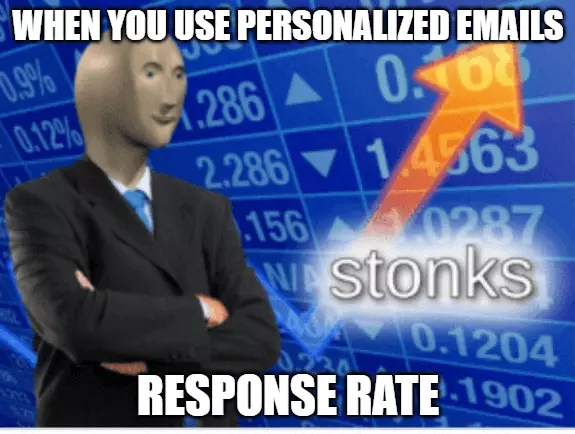
Your initial email may have been general; you’re casting a wide net which makes personalization challenging. But the further into your email sequence you get, the more personalized your emails should be.
Leaving some tempting breadcrumbs for Hansel or Gretel to follow can get them through the door of the gingerbread house quicker. Effective follow-up emails should include new information that wasn’t in the initial email.
Respect the Recipient’s Time
When are you most likely to read your business-related emails, 1:00 am on a Saturday, Christmas Eve, Friday at 7 pm? No, of course not. Those are personal times. The same is true for anyone; people will not read cold emails outside of typical work hours. Your initial email and email follow-ups should all be sent within business hours.
Their business hours. Part of the research you should have done into a prospect initially should include their time zone and holidays if they’re in a different country. Knowing little things like those can also be a friendly basis for building a personal relationship.
“Dear X,”
I hope you enjoyed the Bastille Day holiday…”
Also, be sure to include a CTA in the email subject line of your follow-ups, so the crux of your email is front and center.
Know When to Quit
It is important for you to know when to stop following up with your prospects. Part of respecting a potential customer and their time is to know when to throw in the towel. You can interpret silence as a “maybe” and keep trying, but if you receive any of the following messages, it’s time to stop:
- We’re not looking for X right now
- Please take me off your list
- Unsubscribe me
- Remove me
- STAHP!
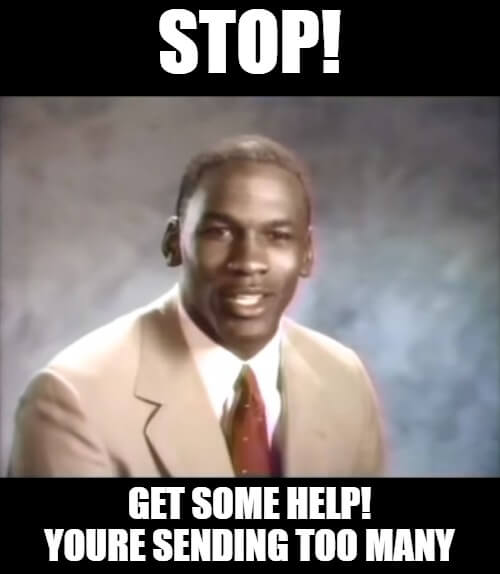
Under the CAN-SPAM Act, you must remove someone from your email list if they request it. If you fail to comply, you can find yourself in legal hot water.
How Many Sales Follow-Up Emails Should You Send?
You don’t just send out follow-up emails willy nilly. There is a rhythm to it with multiple days in between, increasing in length with each email. Cold email automation tools include email sequencing capabilities.
The appropriate number of follow-up emails is three to seven, depending on the type of business. The sequence should look something like this:
- Initial email (Oct 11th)
- Four days later (Oct 15th)
- Another four days later (Oct 19th)
- Four additional workdays (Oct 25th)
- Six days later (Nov 1st)
- Five additional workdays (Nov 8th)
Top 6 Reasons You Must Send Follow-Up Emails
Sometimes it’s not you; it’s them! These are some of the common reasons your sales team didn’t get a response.
#1: You Slipped Their Mind
People get busy within their personal life and business life. Even if they are super interested in what you have to offer and meant to respond, life gets in the way. Nothing personal!
#2: Your Email is in Purgatory, Otherwise Known as Spam Land
It’s possible that your initial email contained too many words that filters consider to be “spam words,” and you got tossed into the black hole of the junk folder. If you missed our past article on avoiding the spam folder, check it out, so your follow-ups don’t end up there too.
#3: People Tend to Respond To a Second Email
We’ve probably all gotten those crazy messages in our email inbox that are clearly scams.
“You’ve Won $10 Million! Just reply with your bank’s routing number and checking account number so we can deposit your winnings!”
We think, how could anyone actually respond and do that?! Well, those scammers send out thousands of those emails. Most of us don’t respond because we can see it’s a phishing scam, so they don’t bother sending out a follow-up email. We’re almost certainly a waste of their time.
They send follow-ups to those who respond, even if they are responding with questions because they suspect it’s a scam. They know that any response is a sign that the person isn’t aware or isn’t 100% convinced it’s a scam and, therefore, a good mark.
If your potential customer doesn’t respond to your first email, they may think you sounded spammy or even scammy. A solid follow-up can convince them that you’re legit.
You added a new subject line in your follow-up email that can break your email thread. They have no clue about who you are and it might cause them to ignore your email.
#4: There Was a Problem With Your Initial Email
Maybe your message screamed, “EMAIL TEMPLATE,” and the reader found it off-putting. Maybe your subject line was clickbaity, maybe your mojo was just off the day you crafted the email, and it just didn’t land.
Perhaps it wasn’t you, and they accidentally deleted your email in a mania to achieve Inbox Zero. There can be so many mistakes in your subject lines.
So maybe it was you, maybe it was them. Either way, your follow-up email is a second chance. Redeem yourself!
#5: Your Timing Was Wrong
Remember what we talked about above about timing? Maybe you sent the first email at a bad time of day or a bad day of the week. Maybe the area they live or work in is having a natural disaster.
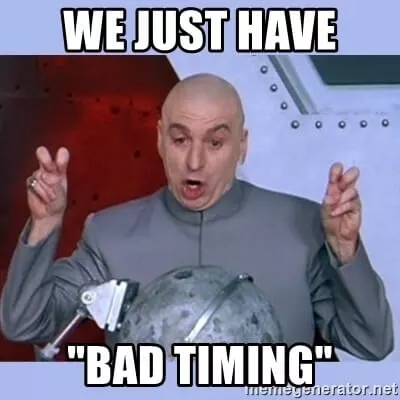
Always check those things before sending the follow-up, and don’t forget to check them the next time you send an initial email. Always check the time zone of your prospects. It is a good practice to send emails during their work hours.
#6: You Missed the Mark
Your first email may not have gone to the right person in the decision-making process. That may mean you had bad initial intel, or you did have the right person, but they moved on or up and are no longer the person you need to reach out to.
Politely ask if this is the case and, if so, to be redirected.
Five Problems Follow-Up Emails Can Solve
You got 99 problems, but a lost sale ain’t one.
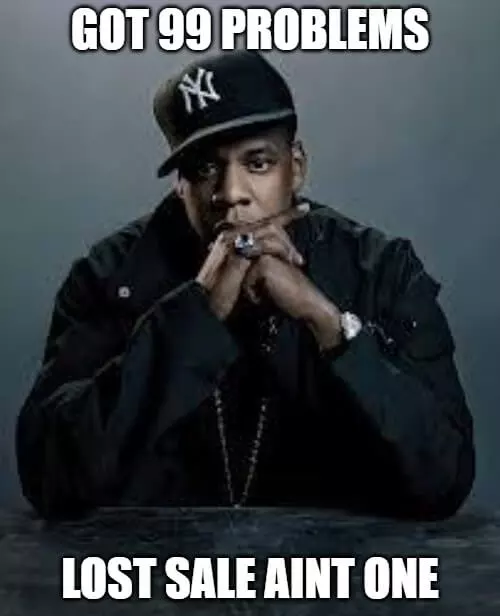
#1. How Do You Close More Deals?
When closing a sale, there are so many factors in the mix, but 70% of sales are closed with a follow-up email. Sending a follow-up is one of the easiest things you can do to increase your sales, so why on earth wouldn’t you?
#2. How Do You Get More Responses?
So much of sales is a numbers game. You have to monitor many things to increase your response rate; delivery rates, well-performing subject lines, but sending or not sending follow-ups plays a significant role in your response rate.
#3. How Do You Stay On Top Of Your Prospects’ Inboxes?
Your prospect is flooded with emails. If your email is not at the top of their inbox, it’s in the Mariana Trench of that inbox.
#4. How Do You Get Your Prospects’ Attention?
Persistence can pay off when you send your leads follow-ups. Of course, you also need things like a catchy subject line and hyper-personalization, but follow-ups play the same role as those other components.
#5. How Do You Make Sure Your Emails Are Seen?
Your initial email may never see the light of day if you have a low delivery rate or a higher spam score. But when everything is right, setting multiple sequences can make sure your prospect sees your emails.
How Can You Automate Follow-Up Emails?
This is the easy part! Well, it is if you use Postaga! Postaga allows you to set up personalized follow-up emails for every prospect. With Postaga, you can also set up customized delays between the follow-ups, something invaluable when you have multiple campaigns happening simultaneously. If you want to automate most of your cold email campaign, postaga is your go-to tool.
That’s all Folks!
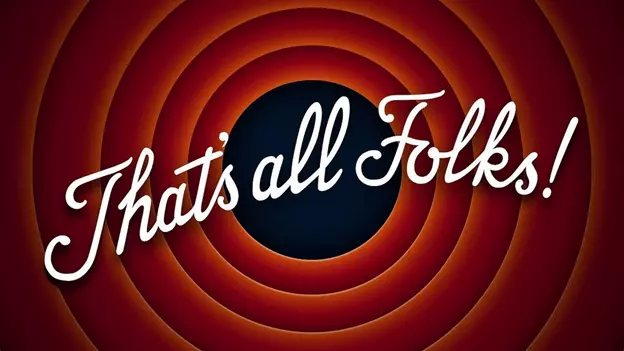
If you’re in sales and aren’t sending follow-up emails, you must have a trust fund or some lottery winnings stashed away! In other words, if you aren’t sending follow-up emails, you are doing it wrong! If you want to go back to the roots then read up our how to write follow-up email article.
If you want to do one thing to increase your sales this year, sending follow-up emails is the most impactful action you can take.
Free 14-Day Trial
Start building relationships now with your fully-featured 14-day trial!
How We Compare
Terms | Done-For-You Terms | Privacy | Write For Us | Press
© 2025 Postaga. All Rights Reserved. Made with 
